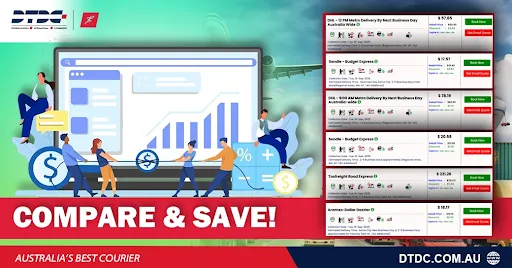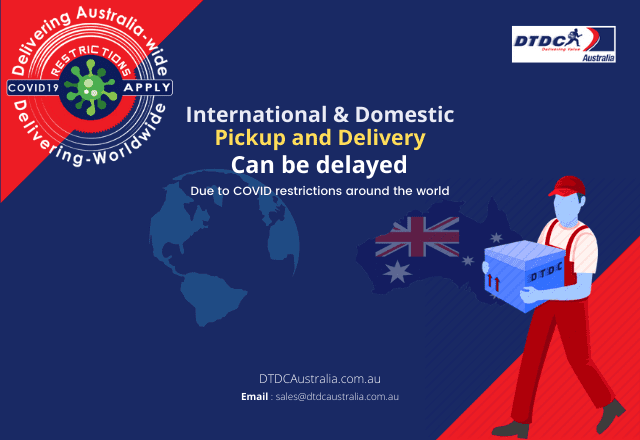You have the customers, branding, and even a huge international order. Then what is the missing piece in the pursuit of scaling your brand? The answer is cross-border shipping; a double-edged sword, which can scale your e-commerce to new heights or burden it with losses. If you are looking for the former and trying to avoid the latter, then you have come to the right place. From addressing the common challenges to identifying the best strategies, this article will provide you with a comprehensive view of shipping overseas.
Your customers do not care about the custom delays, but you should. Before they run out of patience waiting for your order, let’s get started.
What Is Cross-Border Shipping and Why It Matters
Shipping your goods across borders is different from shipping goods between two points in the same country. A lot of regulations and documentations comes into place when it comes to international shipping. For instance, you require a commercial invoice, certificate of origin, and Importer Security Filing (ISF) to ship from Australia to the US. These systems are put in place for a reason, which also means there are ways to work in sync with the system. But if you fail to understand the system, then you fail to understand what is cross border shipping.
Scaling is a natural characteristic of any business, through which it tries to grow beyond its existing capabilities. Different methods exist for the scaling of a brand, and expanding to newer markets is a common method. This strategy is particularly important for businesses like e-commerce brands. In order to reach new customers, a global warehousing & logistics network needs to be put in place, and this is where shipping overseas comes into play. “International shipping is no longer optional for growth-focused brands—it’s a competitive necessity.”— James Corrigan, E-commerce Strategy Lead, Global Trade Insights.
The global e-commerce cross-border market is going to reach $7.9 trillion by 2030, as per the study of Statista. Cross border shipping does provide brands with the opportunity to reach new customers and identify new market opportunities. The strategic importance of shipping overseas in global logistics makes it an important part of scaling brands. E-commerce brands can increase their revenue and reduce their dependency on existing markets by scaling to international markets. Moreover, international markets tend to pay more in comparison to domestic markets, leading to higher profit margins.
Common Challenges With Shipping Overseas
Custom Clearance Issues
Adhering to customs requirements and other compliance standards is a must in international shipping. Preparing your shipments in alignment with the regulations is the only way to get custom clearance, and often, businesses find it difficult to do so. According to the study by Statista in 2023, almost 43% of professionals identified delays faced by customs s the biggest challenge in cross-border e-commerce.
Custom procedures in some countries also bring up challenges, such as in Brazil, where the unstandardized tariff classifications and bureaucratic issues often cause delays of 7-10 days.
Reliable Freight Partner
Your freight forwarding partner is the most important piece in the cross-border shipping puzzle. Finding the right piece is key to solving this puzzle, but finding a reputable freight partner is not an easy task. Competition and marketing gimmicks often fool business owners into making the wrong decision.
Returning Products
Unlike the transactions in the local market, returning the product in cross-border business is difficult. But providing the option to return damaged or unsatisfactory products is key in building customer trust. Sending the product to the destination itself requires a lot of documentation, and returning will also be equally complicated because of shipping overseas rates.
Customer Experience
Cross border shipping does give businesses access to new customers, but to retain them, customer experience is necessary. The complications with the international shipping procedure make it harder to maintain transparency and punctuality in delivery. Additionally, there may be cases of damaged or missing goods.
Currency Fluctuations
Fluctuations in the currency can massively affect the cost of shipping across international borders. Since most will be bulk shipments, the cost will also be higher, and this means a small fluctuation in currency rates can lead to big changes in overall shipping overseas rates.
How to Overcome the Challenges
Align Custom Clearance Measures With International Standards
Issues with custom clearance are a common challenge with cross-border shipping, and businesses need to implement a strict system to adhere to customs regulations. You should be aware of the customs clearance requirements of every country that you are shipping to and ensure accurate documentation to meet these standards. It is also important to confirm the valuation and classification of the goods.
Technology is being heavily used in these areas, such as in Singapore and the EU, where blockchain services are being used to reduce customs delays. Businesses should be equipped to use these opportunities or collaborate with freight forwarders with expertise in these areas.
Partner With Reputable Freight Forwarders
A reputable freight forwarder can help you overcome many challenges that occur with international shipping. Being a good custom clearance agent is a necessary parameter for selecting a freight partner. You can adopt other parameters like experience, expertise, and global network to identify a reputable freight partner. Conduct thorough research into all the options in the market to identify the best freight forwarders (Link to “Top 10 Best Freight Forwarders in Australia” article) for your requirements.
You can also make use of organizations like FIATA (International Federation of Freight Forwarders Associations) and the International Forwarders and Customs Brokers Association of Australia (IFCBAA) to verify the freight forwarder.
Create Contingency Strategies Focusing on Customers
Even after following strict systems, cross border shipping can be affected by unexpected custom clearance issues or other challenges. Customer experience gets affected in such situations, and businesses should have a contingency plan to deal with them. For instance, if the shipment gets delayed because of a transportation problem, then the customer should be updated about this with proper reasoning. Similarly, different contingency solutions can be used to overcome commonly occurring unexpected events that affect customer experience.
Develop a Standard Return Policy
Return policy has become such an integral part of e-commerce that most customers refuse to purchase a product without a return option. But considering that returning goods in international shipping is a complicated procedure, you should have a standard return policy. The details and conditions of your returns policy or the absence of returns should be communicated to the customers. You may lose customers because of no returns policy, but making false promises has a bigger negative impact on customer experience.
If you plan to provide the return option, then you can make use of regional return hubs by collaborating with third-party logistics providers (3PLs). E-commerce brands in Australia collaborate with return centres in Hong Kong to cater to the customers in Asia-Pacific, and this reduces the return shipping time.
Stay Updated With the Cross-Border Market
International trade undergoes constant change due to trade agreements, currency fluctuations, conflict between countries, among other things. You should be aware of these changes and update your shipping strategies accordingly. Such proactive measures will overcome the chances of delays or extra costs that can happen due to changes in the market. Make use of platforms like OFX and Wise to get locked-in exchange rates, mitigating currency fluctuation issues.
Choosing the Best Shipping Options
Success in international shipping depends on effective decision-making regarding the different shipping options available in the market. One wrong decision can alter the trajectory of your business from success to failure. Only after careful observation and analysis of all the options in the market, a decision should be made.
E-commerce brands should be very careful while selecting the shipping partner for their goods. Different shipping agencies have different USPs, like shipping overseas rates, speed, extra features, etc. As a business owner, you should look into the requirements of your brand and identify the shipping partners that align with your strategies. Make sure the freight partner is an experienced custom clearance agent.
Do not fall into the trap of cost-saving, as some agencies provide the worst service with the promise of reduced shipping overseas rates. Cost should only be considered one among the different parameters, like size, speed, customer service, etc. You can give weightage to each parameter depending on your strategies and the needs of your customers. Identifying the correct combination of parameters and making an effective decision based on that is the key to success.
The shipping options should also be a parameter while choosing the shipping service. Some shipping companies have better expertise in a particular type of freight. Sea freight offers more space, while air freight is faster. In Australia, air freight to Europe usually takes 3-5 days, costing $5–$10/kg, while sea freight takes up to 25-35 days but at a lower cost of $0.50–$1/kg. The choice of freight will have a significant impact on your budget.
Best Freight Forwarders in Australia for Shipping Overseas
Some of the freight forwarders known for their expertise and shipping options in cross-border shipping are given below:
- DTDC Australia: Global network across 240 countries and features like compare & choose, same-day & next-day delivery, real-time tracking, and international courier services
- Think Global Logistics (TGL): Expertise in technology-integrated solutions like custom clearance, warehouse 3PL, supply chain consultancy, and oversized cargo.
- DHL Global Forwarding: Experience in air, sea, and domestic freight. Actively undertaking sustainability initiatives.
- DB Schenker Australia: Available across 160 countries and equipped with services like 4PL logistics services.
- Mainfreight: A Legacy of over 100 years and uses technology to enhance the customer experience.
All of these are reputable freight forwarders in Australia with vast global networks and years of experience in global logistics. With the customs clearance, currency fluctuations, and complex networks, cross border shipping often creates losses for businesses. This is what makes it a complicated process to master, but with the right international shipping partner, you can scale your brand to new markets. Here is a comparison table of the top freight forwarders in Australia to make your decision-making easier
Role of Technology in Global Warehousing & Logistics
Technology plays a key role in modern global logistics, and leveraging technology is key in scaling the business. Most of the challenges faced by the global logistics network are solved by implementing technological solutions. Technology has made drastic improvements in specific areas like warehouse management and customer experience.
The impact of the AI revolution is also visible in global logistics with demand forecasting and smart transportation systems. Customs clearance that took days to complete is being solved in a few minutes. Modern warehouses have turned into efficient blocks of a logistics network because of automation and warehouse management systems.
The role of technology in global warehousing & logistics is increasing. Automation and robotics are used by Amazon to reduce time by 70%. Businesses trying to scale need to adapt to these changes. But these changes are happening rapidly, making it hard to catch up with them. In addition to equipping themselves with technological advances, businesses should also ensure the technological expertise of their freight partners.
Scaling Smart With Cross-Border Shipping
The effectiveness of international shipping depends on factors like transparency and customer experience. Challenges to cross-border shipping also emerge from these factors. It is important for businesses to overcome these challenges in order to scale. Scaling of the businesses through cross border shipping can only be achieved by aligning it with the long-term strategies of the business.
If you are a small business looking to scale your business through cross border shipping, then try to partner with a reputable shipping service with expertise in technology.













